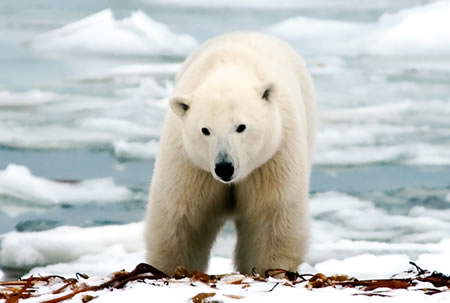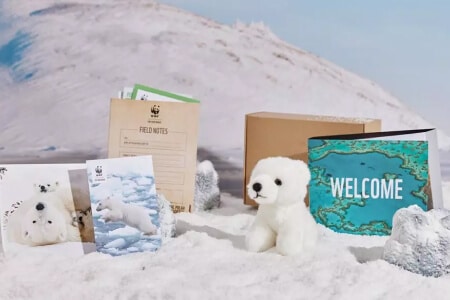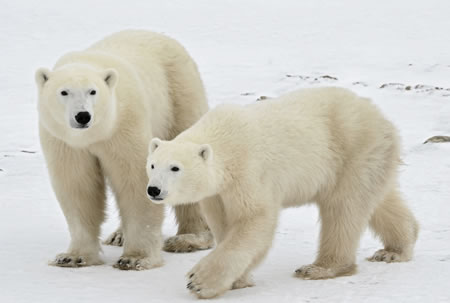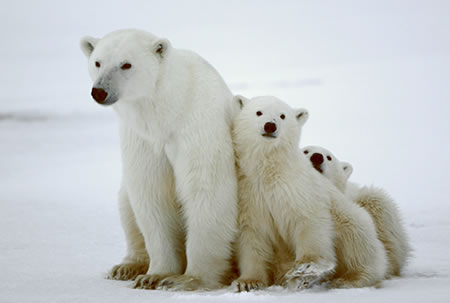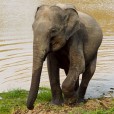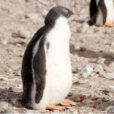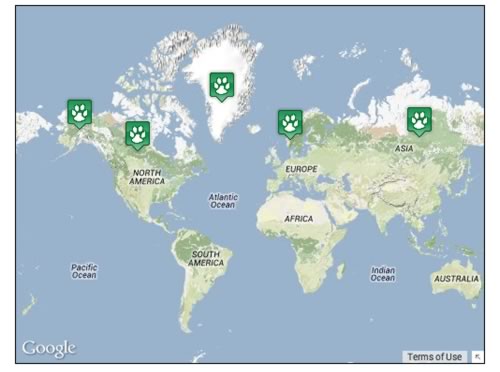Adopt a polar bear and receive
- A cuddly polar bear toy.
- A polar bear factbook together with bookmarks and stickers.
- A certificate to frame your commitment to the WWF (printed on recycled paper).
- Two exclusive magazines: WWF’s ‘Wild World’ and ‘My Polar Bear’ with news and updates for your adopted animal.
udopt'r choice
Polar bears roam around the Arctic landscape with their young after a winter in hibernation. They are solitary creatures, and tend to only mix with other bears during mating season. They love to spend time with their families, but as global warming takes hold, their natural habitat is slowly disappearing.
udopt it because
- 70% of all polar bear babies don’t make it to their 3rd birthday.
- Your adoption will help towards a range of Arctic programmes that help to conserve the region’s rich biodiversity, respecting the local ecosystems.
- A cuddly toy makes this an ideal gift for children.
- It’s great as a last-minute gift as the gift certificate can be printed or emailed immediately following payment.
- How to adopt a polar bear? Adoption programmes start from as little as £3.00 a month.
>> Adopt a Polar Bear Today
Adopt a Polar Bear Gallery
WWF Adopt an Animal Information
Since 1961 WWF have been advocating and giving a voice to the animal kingdom. Recognised for their work internationally udopt is proud to feature WWF animal adoptions programmes. Adopt and you will receive a gift pack including a cuddly toy (or a personalised book with a Tiger adoption), a certificate plus lots more. You'll also get regular updates throughout the year.
https://wwf.org.uk/UK Registered Charity Number 1081247
Delivery information
By Post :
FREE Delivery Your gift pack will be delivered within the UK FREE of charge. Your package will be sent out within 2 business days, but please allow up to 5 days for delivery.
Last Minute Gift? :
Left it until the last minute? The good news is you can still receive a gift certificate to print or email up to the big day! You will then receive the gift pack within 10 days of ordering!
Did you know?
- The polar bear is the world’s largest predator, and can grow up to 10 feet tall and weigh over 1400 pounds!
- When born, a baby polar bear is much smaller than a human baby, and can weigh as little as 1 pound.
- A polar bear’s fur is actually clear and not, as your eyes tell you, white. This visual illusion is caused by the light reflection of its transparent hairs. Bet you didn’t know that!
- The hair is also water repellant, meaning that ice and water are easy to shake off and the hair doesn’t knot.
- Polar bears have slightly webbed toes and paddle with their front feet whilst steering with their hind feet. They can also swim up to an amazing 100 miles in one go!
Our polar bear says…
Please help me, I may be big and furry but I need looking after too. My home is slowly being destroyed by climate change, and food is becoming harder to find. Many of our babies don’t see their third birthday due to a lack of food and the dreaded hunters. Please adopt me today and help us to find our feet again before the ice melts beneath us because of pollution and global warming. We desperately need your help.


